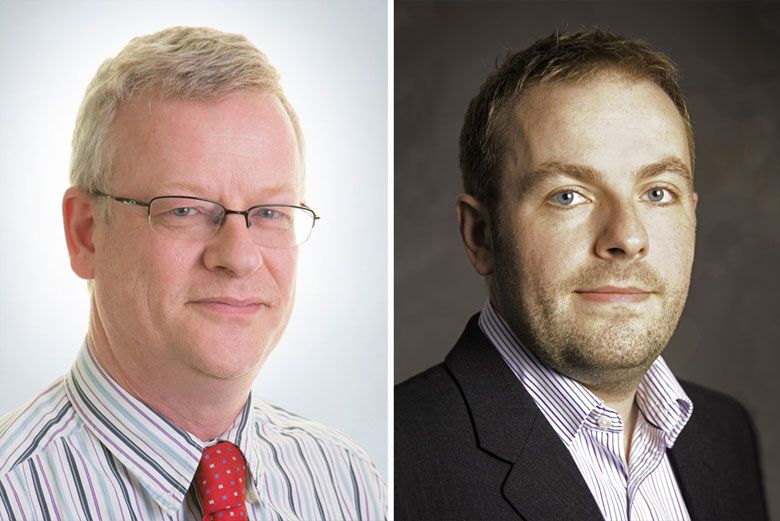Alex Bond and Tim Ingram (England) presented at the 2017 IAM Asset Management Conference in London, England on November 21-22, 2017. Alex and Tim represented MMI Engineering, a division of Geosyntec.
Alex’s presentation was entitled “Fault and Incident Response SSG” and Tim’s was entitled “Systems Engineering Approach to Asset Management.”
Alex Bond is a Principal Engineer based in England with more than 28 years of experience delivering technical and management consultancy projects for clients worldwide.
Tim Ingram is a Senior Engineer with more than 14 years of experience focusing on making sure the right support is in place to maximize equipment availability, quality, and performance in a pragmatic manner for clients worldwide.
The international professional body for asset management professionals. The IAM develops asset management knowledge and best practice, and generates awareness of the benefits of the discipline for the individual, organizations and wider society.
Abstracts
Title: Fault and Incident Response SSG
Presenter: Alex Bond
Abstract:
This paper presents an overview of the key principles behind IAM’s forthcoming Fault and Incident Reporting Subject Specific Guidance (SSG) document.
ISO 5500x is the formal specification and standard for the implementation of an Asset Management System. In order to facilitate implementation of a pragmatic Asset Management System, the IAM has developed additional guidance in the form of the Asset Management Anatomy. This is built around 6 Subject Groups and 39 subjects. The IAM is now engaged in producing additional specific guidance for each of these 39 subject areas, the Subject Specific Guidance. Fault and Incident Response is one of these 39 subject areas. The SSG covering Fault and Incident Response is now reaching a critical stage in its development.
Whilst there is much information available on fault investigation and incident response, it is primarily focussed on the safety and environmental consequences, often used solely to identify blame, and all too often after the event. In reality, it is vital for businesses to consider incident response, proactively and before any incident has taken place.
Only by systematically considering the full range of potential risks and associated consequences can appropriate provisions be made, equipment be available and personnel trained to respond to incidents appropriately. Failure to adequately address the risks leave businesses and enterprises open to increased downtime, financial burden and inappropriate business continuity provisions being made.
This paper presents our current thinking within the SSG and key messages that we are trying to extol through the articulation of tools and techniques that can be used to support incident response as part of a through-life, continuous improvement process which has significant interactions with the remaining Anatomy subject areas.
Title: Systems Engineering Approach to Asset Management
Presenter: Tim Ingram
Abstract:
Systems engineering can be applied in any sector, to any project, but often gets lost in translation.
For example, common issues can be that core terminology are tailored to systems engineering
professionals rather than operators/designers, or the misconception that implementation of systems
engineering is expensive.
The Institute of Asset Management (IAM) recognizes Systems Engineering as a useful tool to help
deliver a successful asset management system. However, the intricacies of how to communicate
such a diverse topic to systems engineering novices have not fully been realized.
A Subject-Specific Guidance (SSG) for Systems Engineering is being prepared by the IAM
community to demonstrate where the Asset Management and Systems Engineering processes can
complement each other pragmatically. In order to achieve this, the main elements of Asset
Management (Strategy and Planning; Asset Management Decision-Making; Lifecycle Delivery; Asset
Information; Organization and People; Risk & Review) have been decomposed to enable a clear
understanding to be presented of where Systems Engineering can add tangible value to the Asset
Management process, and in so doing, to try to initiate a paradigm shift.
We propose that we will present our current thinking within the SSG and key messages that we are
trying to extol through the articulation of tools and techniques that can be used to support an asset
management system. For example, how requirements management principles can be used to
support the development of corporate objectives, and how they are linked to strategy and planning.
The paper will address some of the more complex issues of interaction across an enterprise, but also
the simpler topics of terminology and definition of “systems” which can be lost in translation and lead
to misunderstanding and failure to deliver.
More Information
Learn more about the conference at: 2017 IAM Asset Management Conference.
Learn more about IAM at: http://theiam.org/about-us/vision-strategy/
For consultation regarding asset management, contact Alex Bond at ABond@MMIEngineering.com .
Learn more about Alex at: https://www.geosyntec.com/people/alex-bond
Learn more about Tim at: https://www.linkedin.com/in/tim-ingram-17554127/
